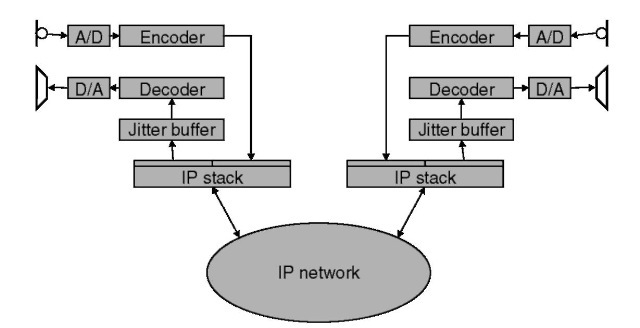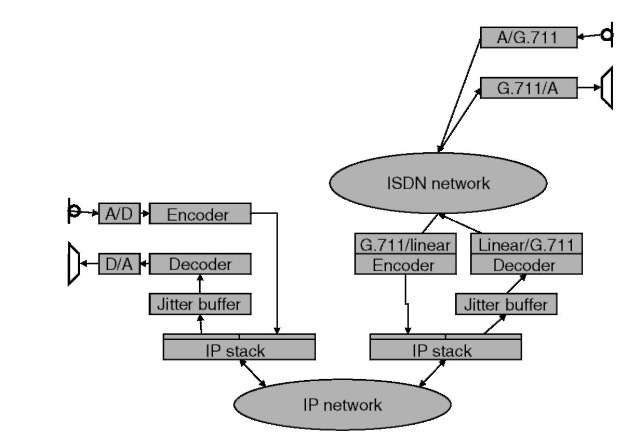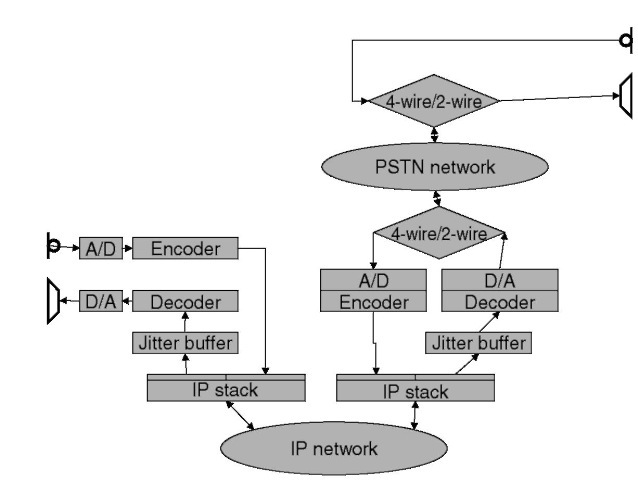3.2
The media path of IP telephony calls can be modeled as shown in Figure 3.1, when there is no POTS or ISDN terminal involved. The situation gets a little more complex when interworking with an ISDN phone through a gateway (Figure 3.2):
When the gateway interfaces with an analog network, the user-network interface is in most cases using only 2 wires (incoming and outgoing signals share the same pair), and a 4-wire/2-wire hybrid is required (Figure 3.3). The model includes the most significant sources of voice quality degradation:
• The IP network introduces packet loss, delay, and jitter.

Figure 3.1 Reference VoIP media path.

Figure 3.2 Reference VoIP to ISDN path.

Figure 3.3 Reference VoIP to POTS path.
• The jitter buffers (JBs) influence end-to-end delay and frame loss.
• The acoustic interfaces introduce acoustic echo.
• The 2-wire/4-wire interfaces introduce electric echo.
• The PSTN network, which potentially introduces further delays.
In this topic we describe the main factors influencing end-user perception of voice quality. Most of those factors are common to switched circuit telephony and IP telephony. However, IP telephony has some unique characteristics, such as long delays, jitter, and packet loss, and therefore requires a new framework for assessing voice quality.
Reference VoIP media path
Next post: Echo in a telephone network (VoIP Protocols)
Previous post: Voice Quality (VoIP Protocols)
